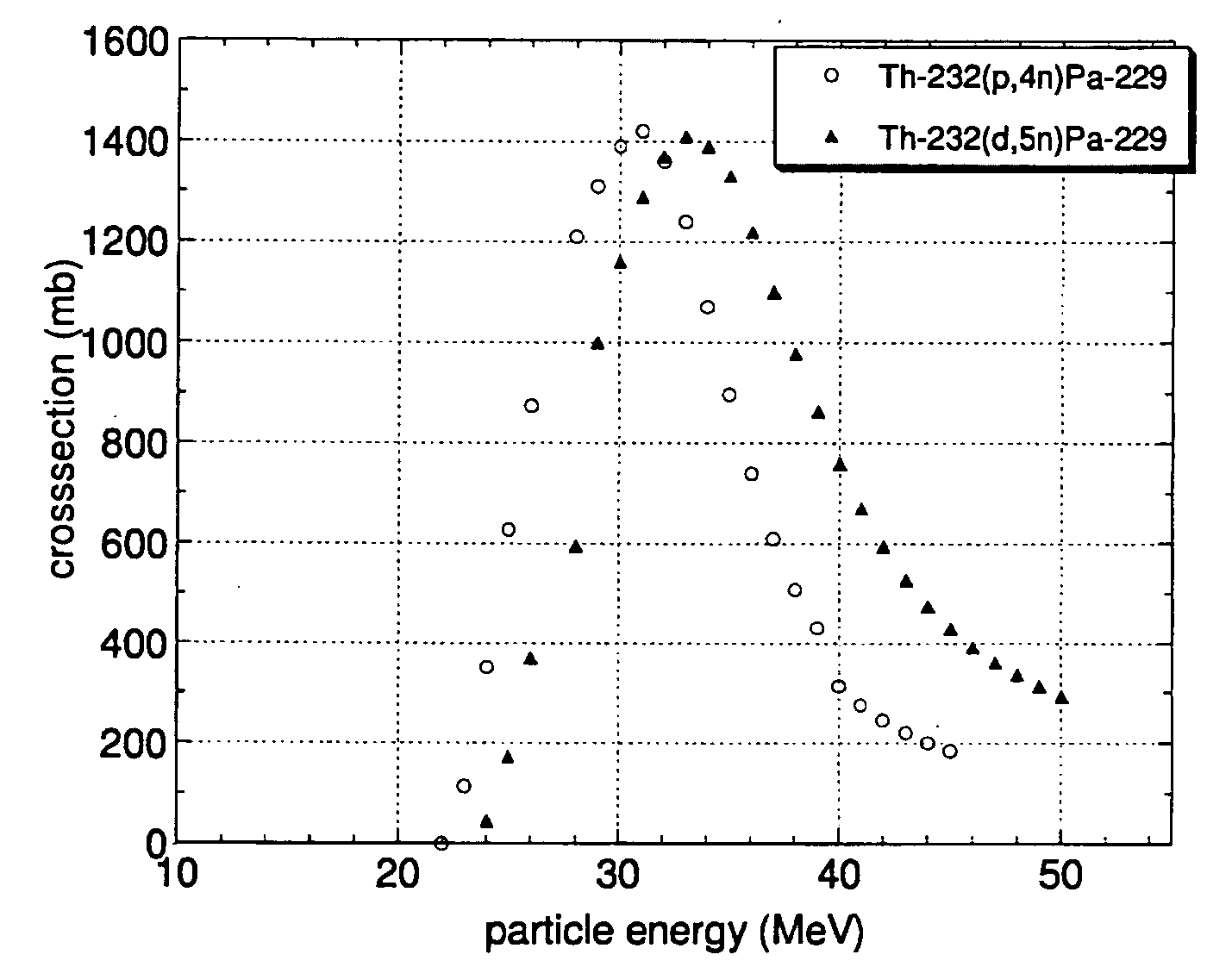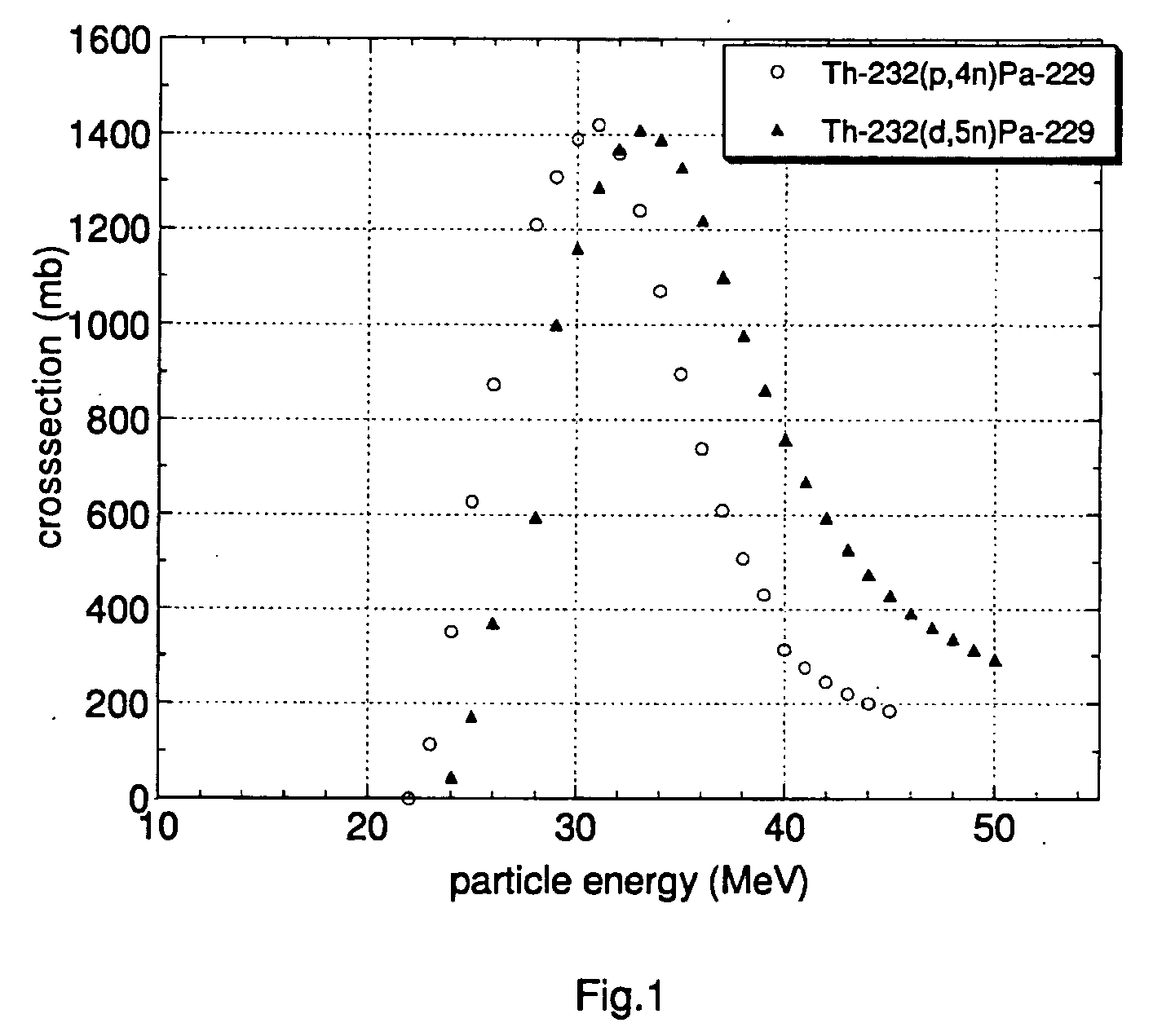Method for producing actinium-225
a technology of actinium and alumina, which is applied in the direction of chemical to radiation conversion, nuclear engineering, and conversion outside the reactor/acceleration, etc., can solve the problems of significant problems in technical realisation, preparation and handling, and require relatively important safety measures, so as to reduce safety risks, facilitate the preparation of targets, and achieve high production yield
- Summary
- Abstract
- Description
- Claims
- Application Information
AI Technical Summary
Benefits of technology
Problems solved by technology
Method used
Image
Examples
Embodiment Construction
[0020] According to the present method Ac-225 is produced by bombardment of Th-232 with hydrogen isotope nuclei. The irradiation of the Th-232 with protons or deuterons of appropriate energy leads to the formation of Pa-229 according to the reactions Th-232(p,4n)Pa-229 or Th-232(d,5n)Pa-229, respectively. The obtained Pa-229 (half-life: 1.5 days) decays via emission of an alpha particle with a branching ratio of 0.48% into Ac-225. Taking into account the half-lives of Pa-229 and Ac-225 (half-life: 10 days), the maximum activity of Ac-225 can be separated from the irradiated target approx. 5 days after the end of irradiation. This time period at the same time allows for sufficient cooling of the target.
[0021] As already mentioned, the use of Th-232 as target material renders the present method more advantageous over production routes using Ra-226 targets in terms of preparation, handling and transport of the targets, and results in greatly reduced safety risks associated with the ir...
PUM
 Login to View More
Login to View More Abstract
Description
Claims
Application Information
 Login to View More
Login to View More - R&D
- Intellectual Property
- Life Sciences
- Materials
- Tech Scout
- Unparalleled Data Quality
- Higher Quality Content
- 60% Fewer Hallucinations
Browse by: Latest US Patents, China's latest patents, Technical Efficacy Thesaurus, Application Domain, Technology Topic, Popular Technical Reports.
© 2025 PatSnap. All rights reserved.Legal|Privacy policy|Modern Slavery Act Transparency Statement|Sitemap|About US| Contact US: help@patsnap.com


